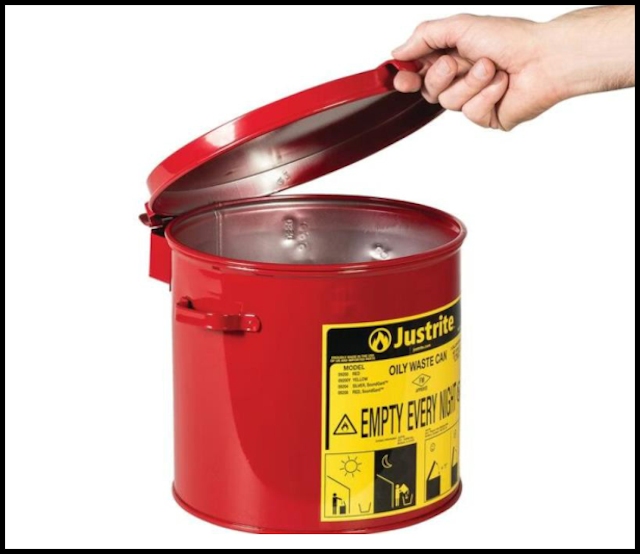
Rags soaked with oil-based paints, stains, linseed oils, varnishes, polyurethane, or paint thinners have the potential to spontaneously combust. To prevent spontaneous combustion, the Southern Marin Fire District recommends placing oil or stain-soaked rags in a metal, UL-listed rag storage container that is equipped with a self-closing lid. The lid helps limit oxygen to a fire in the container in case the rags ignite. These containers are available from most hardware and building-supply stores and online.
An average of 1,700 home fires per year are caused by instances of spontaneous combustion or chemical reaction. An average of 900 home fires per year are started when oily rags catch fire or are ignited.
The National Fire Protection Association recommends:
- Never leave cleaning rags in a pile. At the end of the day, take the rags outside to dry.
- Hang the rags or spread them out to dry. Weigh them down so they do not blow away. Make sure they are not in a pile. Keep them away from buildings.
- Put dried rags in a metal container. Make sure the cover is tight. Fill the container with a water and detergent solution. This will break down the oils.
- Keep containers of oily rags in a cool place. Keep them out of direct sunlight. Keep them away from other heat sources. Check with Bay Cities Refuse for information on disposing of them.
LIQUIDS THAT CAN CATCH FIRE
- Flammable and combustible liquids should not be used near an open flame.
- Do not smoke when working with these liquids.
- If you spill liquids on your clothing, remove your clothing and place it outside to dry. Once dry, clothing can be laundered.
- Keep liquids in their original containers. Keep them tightly capped or sealed. Never store the liquids in glass containers.
GASOLINE
- Use gasoline only as motor fuel. Never use it as a cleaner. Never use it to break down grease. Never bring gasoline indoors, even in small amounts.
- Store gasoline ONLY in a container that is sold for that purpose. Make sure the container is tightly capped when not in use. NEVER store gasoline containers in a basement or in the occupied space of a building.
HOW CAN RAGS START A FIRE?
The oils commonly used in oil-based paints and stains release heat as they dry. If the heat is not released in the air, it builds up. That is why a pile of oily rags can be dangerous. As the rags dry, the heat is trapped. The heat builds up and finally causes a fire. Be aware that this does not happen with water-based finishes.
HOW CAN LIQUIDS START A FIRE?
Vapors from flammable and combustible liquids can ignite, causing a fire. There are many commonly used flammable liquids. Gasoline, lacquers, and nail polish are just a few examples. Combustible liquids include paint thinner, kerosene, and oil-based paints and stains.